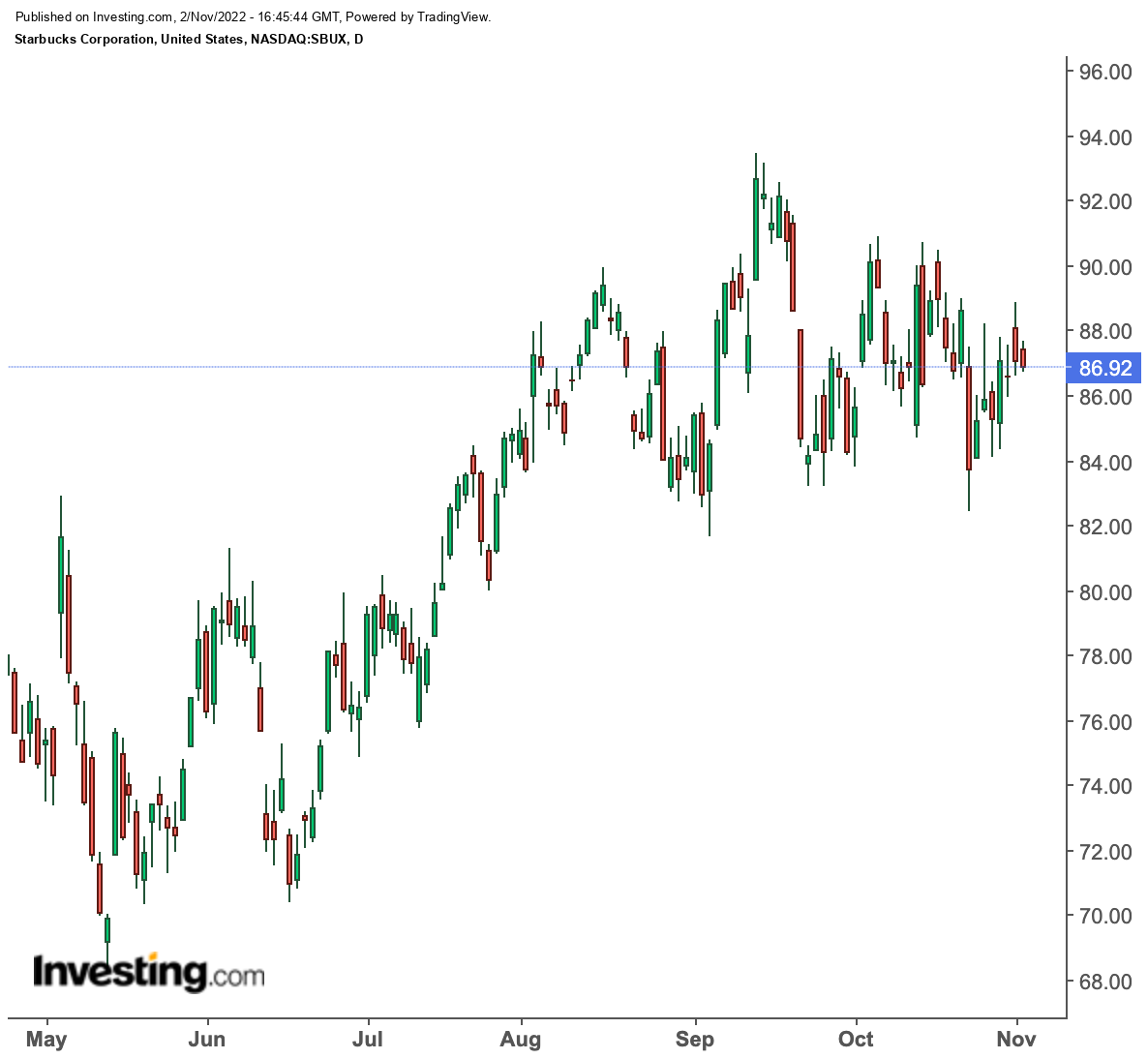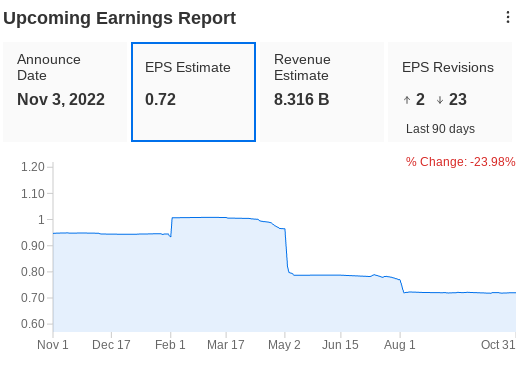Starbucks: Turnaround Remains A Work In Progress, Limiting Mid-Term Upside
2022.11.02 15:48
[ad_1]
- Starbucks faces a growing number of challenges, including a company-wide union push, slowing sales in China, and increasing pressures on margins
- The company plans to spend billions of dollars in the next two years to revive growth
- Starbucks’ upside potential is limited, given uncertainties related to management changes and massive spending
When Starbucks (NASDAQ:) reports its latest quarterly earnings tomorrow, it will need to show its investors that the most significant overhaul in its business in many decades is finally producing results.
The recent developments, however, indicate that the enterprise remains a work in progress, and many uncertainties could hamper a sustainable recovery in the company’s stock price.
In April this year, Howard Schultz, the company’s long-time CEO, returned to his position as a stopgap arrangement to fix the company’s ongoing issues. The company’s shares appear to have reacted well to the news, staging an impressive 23% rebound since the middle of May.

Despite his apparent short-term success, Schultz will pass the mission of building on Starbucks’ new path to Laxman Narasimhan, the former CEO of Reckitt Benckiser Group (LON:), who will take over the Seattle-based company in April next year. At that point, Schultz will cede the top executive role but remain indefinitely as an adviser.
Narasimhan will assume a company facing many long-term challenges, such as a company-wide union push, slowing sales in China, one of the chain’s key areas for growth, and increasing pressures on margins amid commodity and wage inflation.
According to InvestingPro’s earnings data, it seems Wall Street analysts aren’t yet quite convinced that the company’s earnings momentum will be back soon.

SBUX Earnings Estimates
Source: InvestingPro
While consumer demand in North America could show robust activity, Starbucks’ sales in China—its second-largest market— will likely remain depressed. Sales plunged 44% in the previous quarter amid the country’s renewed COVID-related shutdowns and other restrictions.
During the past 90 days, there have been 23 downward earnings revisions for SBUX and just two upgrades. According to analysts’ consensus forecast, the coffee chain will report $8.316 billion in sales and 0.72 a share profit.
Massive Spending Plan
SBUX’s upside potential remains limited, in my view. The company plans to spend between $2.5 to $3 billion annually through its 2025 fiscal year to build new types of stores and deploy updated equipment across locations.
Schultz, while outlining this turnaround strategy in September, told investors that this spending will result in higher sales and profits, with global sales growing 10% to 12% annually from its 2023 to 2025 fiscal years and adjusted earnings per share rising by 15% to 20% annually during that period.
These spending plans, coupled with sticky , will continue to pressure margins. In addition, a potential recession may further jeopardize the recovery in sales. A September survey from research firm Datassential Inc., cited by Bloomberg News, found half of the consumers had recently cut back on restaurant meals due to high inflation.
According to the report, eating out was the No. 1 expenditure respondents opted to trim, followed by apparel and travel. About 30% of those surveyed said they plan to dine out less or stop visiting restaurants entirely in the coming months.
Despite these headwinds, Starbucks remains a premiere, large-cap, global consumer company led by a dominant U.S. retail & consumer product platform with significant international growth potential.
This global strength makes the stock an attractive long-term bet, but investors shouldn’t expect major upside potential at this point.
Bottom Line
The management change, inflationary pressures, and uncertainties about the company’s new direction are some factors that limit SBUX’s upside potential in the short run, especially after its recent rebound. Investors, in my view, are better off staying on the sidelines and waiting for a better entry point.
Disclosure: At the time of writing, the author doesn’t have a position in stocks mentioned in this article. The views expressed in this article are solely the author’s opinion and should not be taken as investment advice.
[ad_2]
Source link








